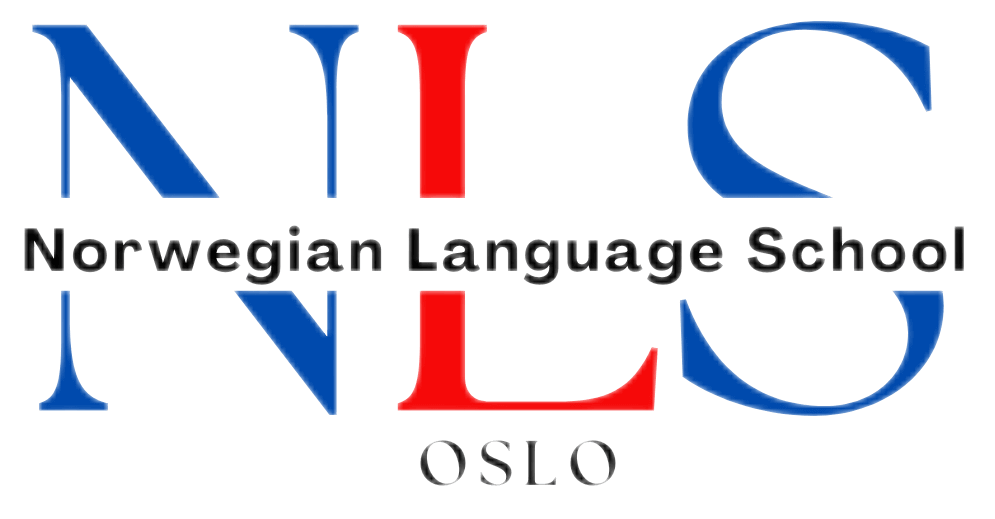

Navigating the Norwegian Language Requirements for Citizenship – A Comprehensive Guide
Norway, known for its stunning fjords, high living standards, and robust social welfare system, is a popular destination for people around the world seeking new opportunities and a high quality of life. As part of integrating into Norwegian society, the country requires most adults who apply for citizenship to demonstrate a certain level of proficiency in Norwegian. This language requirement not only encourages newcomers to effectively communicate in daily life but also fosters stronger social connections, enhances employment opportunities, and promotes cultural understanding. In this comprehensive guide, we’ll delve into why the Norwegian government enforces these requirements, the proficiency levels involved, the types of language tests you can take, and which exemptions or exceptions might apply.
(Note: If you are preparing for your Norwegian language exam and want structured, outcome-oriented training, consider signing up for the Norskprøven preparation course at NLS Norwegian Language School. This course helps you systematically build your language skills and confidence ahead of the official test.)
Table of Contents
Toggle1. Why Norway Requires Language Proficiency for Citizenship
Language requirements in citizenship laws reflect a country’s desire to ensure that new citizens can effectively participate in daily life. By requiring immigrants to learn Norwegian (or a recognized variant such as Sami or Norwegian Sign Language), the Norwegian government seeks to promote successful integration and communication. Mastery of the local language enables newcomers to fully engage in conversations with neighbors, co-workers, and community members. It also ensures that new citizens understand and navigate public services, educational opportunities, and other important facets of Norwegian society.
Beyond this, a certain level of Norwegian proficiency is correlated with better economic prospects. Employers often look for candidates who can interact with clients, customers, and colleagues in Norwegian. While English is widely used in Norway, particularly in multinational companies, demonstrating fluency in Norwegian can open doors to diverse roles, career growth, and a sense of belonging in the workplace.
2. Overview of the CEFR Proficiency Levels
Language proficiency in Norway is typically measured according to the Common European Framework of Reference for Languages (CEFR). This system categorizes a learner’s abilities into six broad levels:
-
A1 – Beginner
-
A2 – Elementary
-
B1 – Intermediate
-
B2 – Upper Intermediate
-
C1 – Advanced
-
C2 – Proficient/Native-like
While these letters and numbers might seem abstract, each corresponds to specific descriptors detailing what a learner can do in listening, speaking, reading, and writing. For citizenship, the typical focus is on demonstrating oral communication skills—specifically, reaching a minimum of B1 (intermediate) in speaking.
3. Standard Norwegian Language Requirement: B1 Oral Proficiency
Under the current rules, the standard requirement for adults between 18 and 67 is to pass an oral Norwegian test at the B1 level. In practice, this means you should be comfortable carrying on everyday conversations, expressing opinions, asking questions, and using appropriate vocabulary for common scenarios (shopping, work, leisure, etc.).
-
Speaking at B1: You can handle routine tasks, discuss topics of personal interest, and generally produce understandable spoken language with minimal confusion. You might still make grammatical errors, but you can correct yourself mid-speech or clarify misunderstandings with relative ease.
-
Listening comprehension: While the official requirement emphasizes speaking, you will likely need to demonstrate some ability to understand spoken Norwegian as part of the oral exam.
-
Emphasis on Oral Skills: The law specifically highlights “spoken Norwegian” or “Norwegian Sign Language,” meaning reading and writing proficiency is not mandated at B1 for citizenship. However, if you take a standardized test like Norskprøven, you can expect it to include reading, writing, and listening components as well, which can help you measure overall language progress. But for the legal requirement, the oral exam result is pivotal.
(If you’re preparing for the B1 exam and need structured lessons, sign up for the Norskprøven preparation course at NLS Norwegian Language School to boost your confidence and skills. The course focuses on targeted practice to help you succeed on test day.)
4. Accepted Tests and Certificates
The Norwegian government recognizes several official assessments to prove language proficiency. The most commonly used are:
-
Norskprøven: A state-sponsored test available at different skill levels (A1–A2, A2–B1, and B1–B2). For citizenship, you’ll likely want to sign up for the B1–B2 version, ensuring you can demonstrate at least B1 on the oral component.
-
Bergenstest (Test i norsk – høyere nivå): A more advanced exam corresponding to B2/C1. If you pass the oral portion of the Bergenstest, you exceed the minimum requirement for citizenship. This test is not used anymore.
-
Older/Legacy Exams: If you took “Norskprøve 2” or “Norskprøve 3” in the past, these could still count if your results meet the required level. Speak with the Norwegian Directorate of Immigration (UDI) to confirm.
-
Norwegian Sign Language Test: Applicants who communicate primarily in Norwegian Sign Language can fulfill the requirement with a recognized test demonstrating B1 proficiency in signing.
-
Academic Education in Norwegian: If you completed primary or secondary school in Norway (or in a Sami language medium) and received passing grades in Norwegian or Sami, this generally exempts you from having to take a separate test. Similarly, if you completed certain university credits in Norwegian or passed the “Trinn 3” Norwegian exam at a university, you’re also exempt.
5. Exceptions and Exemptions
Not everyone is expected to pass the B1 oral test. Key exceptions include:
-
Stateless Applicants: Only need to demonstrate A2 (elementary) in spoken Norwegian.
-
Refugees Over 55: May also be able to fulfill requirements at A2 level instead of B1.
-
Medical/Disability Exemptions: If a documented health condition makes it impossible to achieve B1, a lower threshold or complete waiver can be granted.
-
Age-Based Exemption: Anyone over 67 is generally exempt from the language requirement.
It’s important to note that each exemption has unique documentation processes, so check with UDI to confirm eligibility. For instance, older refugees who arrived in Norway late in life may show that B1 is unfeasible, thus they only need A2. However, they still need to present official test results at that level.
6. Special Rules for Nordic Citizens
If you hold citizenship from Sweden, Denmark, Iceland, or Finland, the law only requires that you “understand Norwegian or Sami.” While no formal test is generally required, you might need a letter from an employer, neighbor, or municipal official affirming that you can comprehend and speak Norwegian. This distinction recognizes the close linguistic ties among the Nordic countries.
7. Language Training Versus Testing
Historically, Norwegian citizenship required demonstrating a certain number of course hours (e.g., 300 or 600 hours). More recent changes have shifted the emphasis to actual language ability rather than attendance. Instead of presenting a certificate of completed hours, you must pass the test that verifies you’ve reached the required level. Nonetheless, many municipalities offer free or subsidized language classes for refugees and family reunification immigrants. Others—like EU/EEA nationals—may not be eligible for free courses and might consider private tutoring or self-study.
If you’re unsure whether you need classes, the best approach is to take a placement test or speak with your local adult education center. If you assess around A2 or lower, you might need structured instruction to progress to B1. If you’re a strong B1 speaker, you could focus on targeted exam practice and mock tests before sitting for the official test.
(Looking for a thorough course that culminates in a strong B1 performance? Register for the Norskprøven preparation course at NLS Norwegian Language School, which covers speaking practice, test strategies, and relevant vocabulary in depth.)
8. Practical Tips for Meeting the B1 Requirement
-
Set Realistic Goals: Attaining B1 oral fluency usually takes consistent effort over several months (or even a year) depending on your starting level. Plan your timeline accordingly.
-
Daily Norwegian Practice: Integrate Norwegian into everyday life—watch Norwegian TV shows, listen to local radio, read newspapers, and try to speak Norwegian at supermarkets or with neighbors.
-
Formal Language Courses: Professional tutors at your local adult education center or a private language school can help you systematically address grammar, pronunciation, and fluency issues.
-
Form a Study Group: Connect with other learners who aim for the same exam or proficiency level. Practicing in small groups can lower the stress of speaking and keep motivation high.
-
Focus on Listening Comprehension: Although the requirement is speaking-focused, good listening comprehension is essential to having a fluid conversation.
-
Simulate Exam Conditions: Time yourself in speaking tasks similar to the official exam setting. Practice describing pictures, discussing topical questions, and responding spontaneously.
-
Leverage Language Apps: Tools like Duolingo, Babbel, or Memrise can reinforce vocabulary, but be sure to pair them with real-life conversation practice.
9. Common Myths and Misconceptions
-
Myth #1: “English is enough for everyday life.” While many Norwegians speak English, the citizenship process requires proof of Norwegian skills—being fluent in English doesn’t exempt you from that requirement.
-
Myth #2: “B1 means I must speak perfect Norwegian.” Reaching B1 doesn’t imply perfection. You can have a moderate accent, make grammatical slips, and occasionally pause to recall words. What matters is that you communicate effectively in routine contexts.
-
Myth #3: “One can’t pass the exam without living in Norway for years.” This depends on your background, study habits, and whether you take advantage of language learning resources. Some people reach B1 within a year of dedicated study, especially if they immerse themselves in Norwegian media or daily interaction.
10. The Citizenship Knowledge (Social Studies) Test
In addition to the language requirement, you must pass a multiple-choice exam covering topics like Norwegian history, politics, culture, and societal norms. The test can be taken in Norwegian at an A2–B1 reading level, or sometimes in other authorized languages. However, the synergy between the language exam and the knowledge exam is straightforward—if you’re comfortable at B1 in Norwegian, you’ll likely handle the Norwegian version of the social studies test just fine.
11. Planning Your Application Timeline
Securing Norwegian citizenship also requires meeting residency (length of stay) conditions, having a clean police record, and meeting other administrative criteria. The language requirement often becomes the final step once you’ve amassed enough years of legal residence and have integrated into daily life. If you foresee that your existing language level is below B1, plan on taking at least six months to one year of study. Once you’re confident, register for the official Norskprøven or an equivalent recognized test.
12. Documenting Your Achievement
After passing the oral Norwegian exam, make sure you get an official transcript of your results. This document typically indicates your CEFR level in each skill (e.g., speaking, listening, reading, writing). For citizenship, the critical piece is your oral proficiency at B1 or higher. Submit the relevant documentation along with your application to the UDI. They will verify it, check for any other outstanding requirements, and process your application accordingly.
13. Conclusion
The Norwegian language requirement for citizenship underscores the country’s commitment to fostering a well-integrated, communicative society. Achieving B1 oral fluency might feel daunting at first, but with structured practice, consistent exposure, and possibly formal instruction, thousands of applicants successfully meet this standard every year. Start early, identify your strengths and weaknesses, and make use of every available resource—from local adult education centers to online tutoring platforms and language exchange communities.
For those who need additional support and want to train specifically for the exam, the Norskprøven preparation course at NLS Norwegian Language School provides targeted lessons and practice tailored to your success. By diligently working toward B1-level speaking and staying aware of relevant exemptions and exceptions, you can confidently look forward to securing Norwegian citizenship and fully immersing yourself in the culture, community, and opportunities this beautiful country has to offer.
If you want to learn Norwegian, you can register for classes here. We look forward to hearing from you and helping you become fluent in Norwegian.





